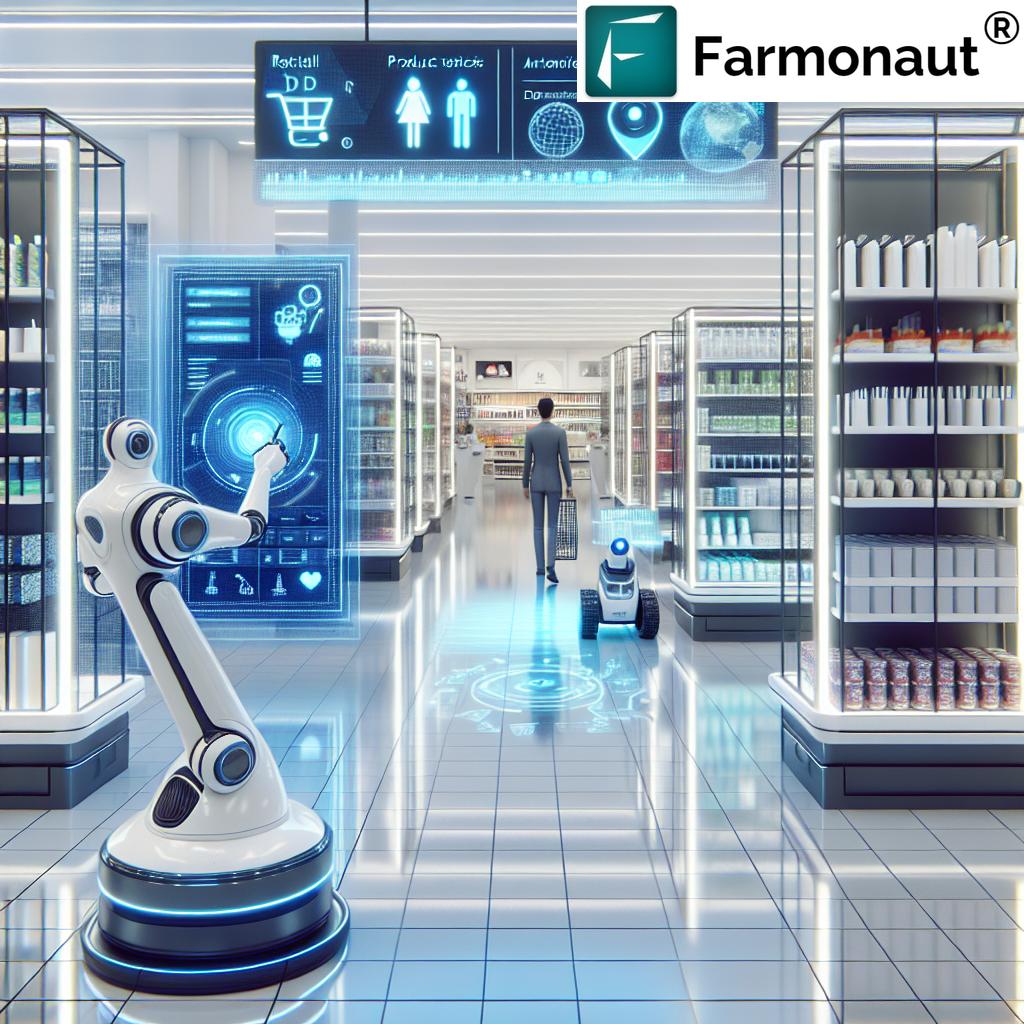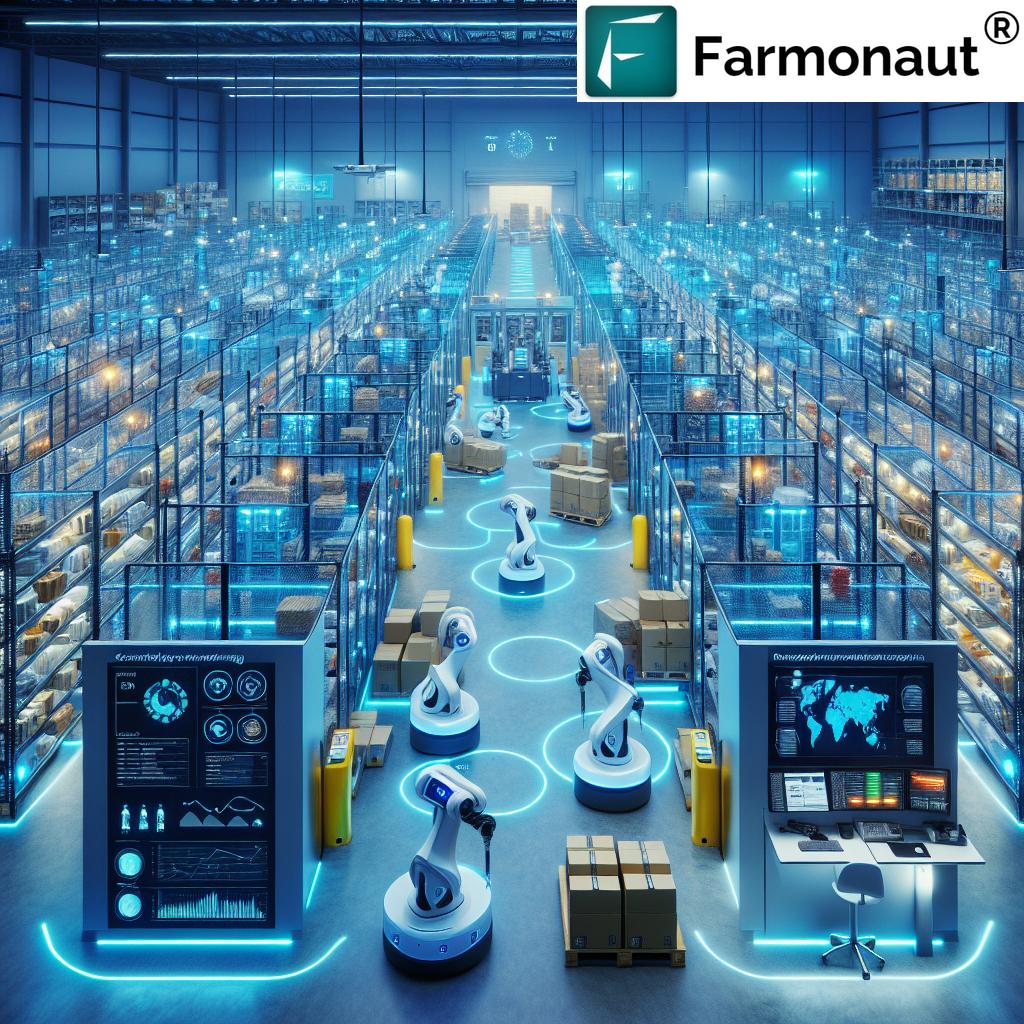The Future of Australian Retail: How AI-Powered Robots Will Transform Shopping by 2030

“By 2030, AI-powered retail robots are expected to handle over 50% of inventory management tasks in Australian stores.”
As we approach the year 2030, the landscape of Australian retail is poised for a revolutionary transformation. The integration of AI-powered robots into the retail sector is not just a futuristic concept but a rapidly approaching reality. In this comprehensive exploration, we’ll delve into how these technological advancements will reshape the shopping experience, enhance operational efficiency, and drive innovation in the Australian retail industry.
The Dawn of Robotic Retail Revolution
The future of robotics in retail is set to dramatically alter how businesses operate and interact with consumers. From warehouse automation to customer-facing robots, the implications for efficiency, customer service, and sustainability are profound. As we look towards 2030, we can expect to see AI brains integrated into various machines and robots throughout the retail ecosystem, creating a new paradigm in shopping experiences.
The widespread adoption of robotics in stores is gaining momentum, driven by technological advancements and the increasing demand for efficiency and enhanced customer experiences. Let’s explore some of the key factors influencing this robotic retail revolution:
- Technological Maturity: As robotics technology continues to advance, with improvements in AI, machine learning, and sensor technology, robots are becoming more capable and cost-effective. We anticipate seeing more robots in stores within the next 5-10 years.
- Cost Reduction: Initially, high costs limited the deployment of robots primarily to larger retailers or those in pilot phases. However, as the technology becomes more common and production scales, costs are likely to decrease, making robotics more accessible to a broader range of retailers.
- Consumer Acceptance: As consumers become more accustomed to interacting with robots, whether in retail environments or through other services like deliveries, the barriers to widespread adoption in stores will decrease.
To better understand the impact of AI-powered robots on Australian retail by 2030, let’s take a look at this comparison table:
| Retail Area | Current Status | Projected 2030 Impact |
|---|---|---|
| In-Store Customer Service | Primarily human-driven with limited tech assistance | 50% of routine inquiries handled by AI robots, freeing staff for complex interactions |
| Warehouse Management | Partial automation in larger warehouses | 80% of warehouses using AMRs, increasing efficiency by 40% |
| Inventory Accuracy | 85-90% accuracy with manual counts | 99% accuracy with AI-powered robots conducting real-time monitoring |
| Order Processing Time | Average 2-3 days for standard delivery | Same-day delivery standard, with 60% reduction in processing time |
| Operational Costs | High labor costs in various operations | 30% reduction in operational costs through robotic process automation |
Robotics in Warehousing and Logistics
One of the most immediate and impactful applications of robotics in retail is within warehousing and logistics. With the rise of e-commerce, the demand for efficient fulfilment solutions has skyrocketed, and robots have become indispensable in warehouses across the globe. By 2030, Australian retailers are expected to have adopted a range of robotic solutions to keep up with this demand, from autonomous mobile robots (AMRs) to automated storage and retrieval systems (AS/RS).
AMRs, which navigate warehouse floors autonomously to transport goods from one location to another, will likely become commonplace in Australian warehouses. These robots not only speed up the picking process but also reduce the physical strain on human workers, creating a safer and more efficient environment. AS/RS systems, which use robotic cranes and shuttles to retrieve items from high-density storage racks, are also set to play a major role in maximizing space while fulfilling orders faster.
Robotic process automation (RPA), a technology that uses software robots to automate repetitive tasks, is expected to be widely adopted by Australian retailers by 2030. RPA can handle tasks like order processing, inventory management, and data entry, reducing the workload on human staff and minimizing errors. These improvements in warehouse efficiency are essential for retailers to remain competitive, especially as delivery speed becomes a key differentiator in the market.
In-store Robotics: A New Customer Experience
Beyond warehouses, robotics is expected to transform the in-store experience for Australian consumers. By 2030, robots could become common fixtures in physical retail spaces, performing a variety of roles that enhance customer service and create unique shopping experiences.
“Studies predict that customer-facing robots will increase in-store sales by up to 20% through personalized recommendations and improved service.”
For example, customer-assistance robots, equipped with AI-powered conversational abilities, can help shoppers locate products, provide personalized recommendations, and even answer frequently asked questions. This will transform the customer experience by meeting routine needs efficiently while freeing human staff to engage with more complex, high-touch interactions.
Inventory management is another area where in-store robots will have a profound impact. Robots equipped with cameras and sensors can autonomously scan shelves to monitor stock levels, identify misplaced items, and notify staff when replenishment is needed. This automated approach to inventory management reduces the burden on human employees and ensures shelves remain stocked, minimizing the risk of lost sales due to out-of-stock items. Additionally, these robots offer a unique opportunity to collect valuable data on consumer shopping patterns, leveraging such data to enhance inventory planning and forecasting.

Australian retailers are also likely to embrace cleaning robots in the coming years, integrating automation to manage store hygiene and presentation. These robots, already in use in some international markets, can autonomously clean floors and sanitize high-touch surfaces. As Australian consumers continue to prioritize cleanliness and safety, especially in the wake of the Covid-19 pandemic, such robotic solutions will probably become a standard feature in many stores.
Enhanced Customer Engagement with AI and Robotics
By 2030, the integration of artificial intelligence (AI) with robotics will enable Australian retailers to create more personalized and engaging shopping experiences. AI-powered robots can analyze customer data to tailor recommendations and provide real-time assistance, bringing the kind of personalization previously limited to e-commerce into physical stores.
Imagine a scenario where a robot, familiar with a shopper’s preferences and purchase history, can suggest complementary items or notify them of upcoming sales on favorite brands. This level of personalization not only enhances the shopping experience but also has the potential to significantly boost sales and customer loyalty.
Beyond customer engagement, the integration of AI with robotics will enhance security and loss prevention in Australian retail spaces. Security robots equipped with cameras and facial recognition technology can patrol store floors, identifying potential thefts or suspicious behavior. These robots act as a deterrent to crime and reduce the need for human security personnel, while their advanced surveillance capabilities provide retailers with valuable insights on store traffic and shopping patterns.
Robotics and Sustainability
Sustainability is becoming a growing priority for Australian retailers, and robotics are playing a crucial role in this area as well. Robotics can help reduce waste and improve energy efficiency in various ways, contributing to a more sustainable retail ecosystem.
For example, robots in warehouses can optimize order picking and packing to reduce packaging waste, while autonomous vehicles and drones can streamline last-mile delivery, minimizing fuel consumption and emissions. Energy-efficient robots, equipped with advanced battery technology, will further showcase how innovation will align with future sustainability objectives, reducing the environmental footprint of retail operations.
It is expected that, by 2030, most retail robots will be designed with sustainability in mind, using recyclable materials and energy-saving features. Australian retailers will probably be incentivized by both regulatory pressures and consumer expectations to adopt eco-friendly robotics solutions.
Challenges to Widespread Adoption
While the future of robotics in Australian retail looks promising, there are several challenges that retailers will need to navigate:
- High Upfront Costs: The initial investment required for robotic systems remains a significant barrier, especially for small and mid-sized retailers.
- Technical Expertise: The implementation of robotics demands specialized knowledge and regular maintenance, adding a layer of operational complexity.
- Workforce Concerns: There is an ongoing debate about the potential displacement of human workers in retail due to automation.
To address these concerns, Australian retailers will need to strike a balance between automation and human employment, potentially upskilling their workforce to manage and interact with robotic systems.
The Road to 2030: What Lies Ahead
The future of robotics in Australian retail is set to be transformative, with advancements that will reshape how businesses operate and engage with consumers. By 2030, robotics will play a central role in warehouses, stores, and supply chains, driving efficiency, transforming customer experiences, and contributing to sustainability efforts.
While challenges remain, the potential benefits of robotics far outweigh the obstacles, and Australian retailers that embrace this technology will be well-positioned to thrive in a competitive market. As we look towards the future, it is clear that robotics will not only enhance operational efficiency but also redefine the shopping experience for Australian consumers.
Whether through faster order fulfillments, personalized assistance, or improved sustainability practices, the impact of robotics on Australian retail will be profound, offering a glimpse into an exciting new era for the industry.
FAQ Section
- Q: How will AI-powered robots change the customer experience in Australian retail stores?
A: AI-powered robots will enhance the customer experience by providing personalized recommendations, assisting with product location, answering queries, and streamlining the checkout process. This will lead to more efficient and tailored shopping experiences. - Q: What impact will robotics have on employment in the Australian retail sector?
A: While some job roles may be automated, robotics is expected to create new job opportunities in areas such as robot maintenance, data analysis, and customer experience design. The focus will likely shift towards upskilling the workforce to work alongside robotic systems. - Q: How will robotics contribute to sustainability in Australian retail?
A: Robotics will enhance sustainability through optimized inventory management (reducing waste), energy-efficient operations, and improved logistics (reducing carbon emissions). Retailers are also likely to adopt eco-friendly robotic solutions made from recyclable materials. - Q: What are the main challenges in implementing robotic systems in Australian retail?
A: The primary challenges include high initial costs, the need for technical expertise, potential workforce disruption, and ensuring seamless integration with existing systems. Retailers will need to carefully plan and manage the transition to robotic systems. - Q: How will robotics change the layout and design of Australian retail stores?
A: Store layouts may evolve to accommodate robotic systems, with more open spaces for robot navigation, dedicated areas for automated pickup, and redesigned shelving systems for easier robotic inventory management. The overall design may become more tech-centric and interactive.
As we conclude our exploration of the future of Australian retail, it’s clear that the integration of AI-powered robots will bring about significant changes by 2030. From enhancing customer experiences to revolutionizing backend operations, the impact of robotics will be far-reaching and transformative.
While the journey towards this robotic future may present challenges, the potential benefits in terms of efficiency, personalization, and sustainability are immense. Australian retailers who embrace these technological advancements will be well-positioned to thrive in an increasingly competitive and dynamic market landscape.
As we move towards 2030, it will be fascinating to watch how these predictions unfold and how the Australian retail sector adapts to and harnesses the power of AI and robotics. The future of shopping is here, and it’s more exciting and innovative than ever before.
Earn With Farmonaut: Join our affiliate program and earn 20% recurring commission by sharing your promo code and helping farmers save 10%. Onboard 10 Elite farmers monthly to earn a minimum of $148,000 annually—start now and grow your income!
Explore Farmonaut’s innovative solutions:







